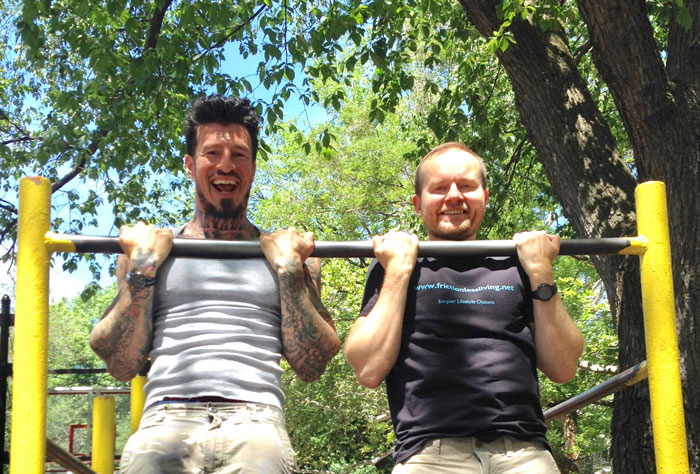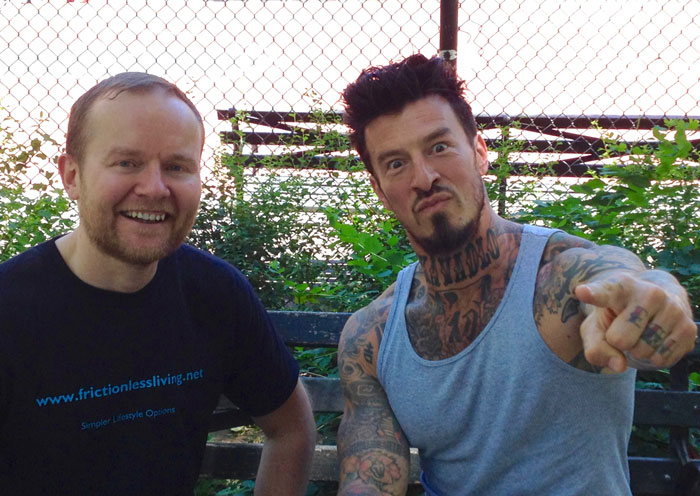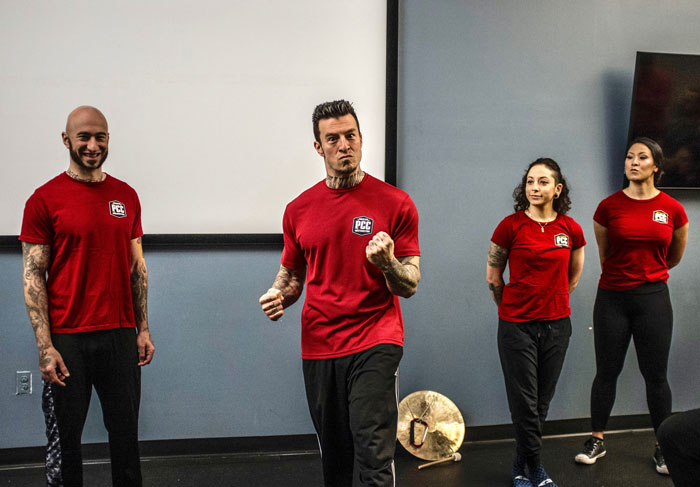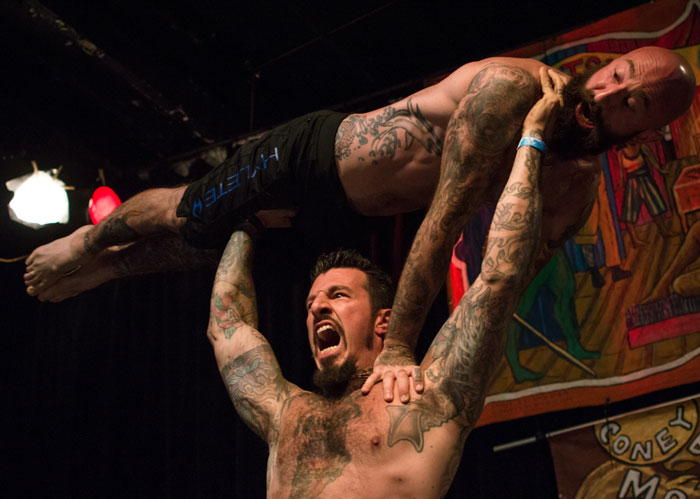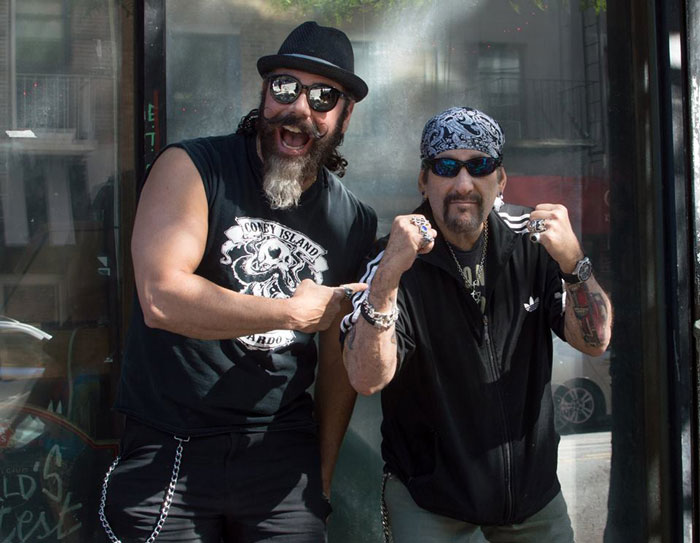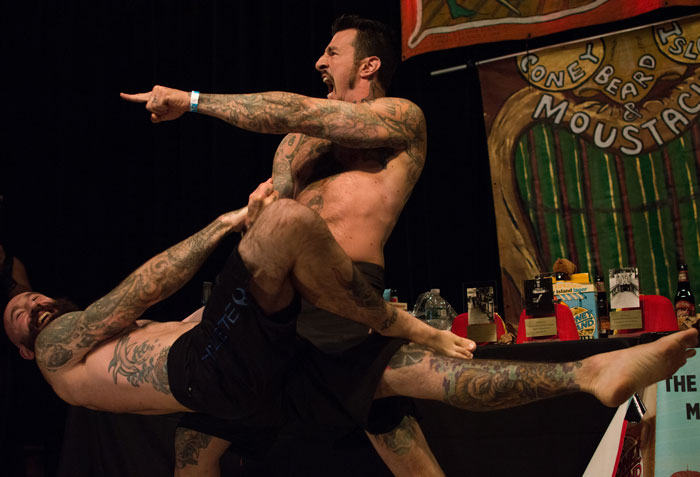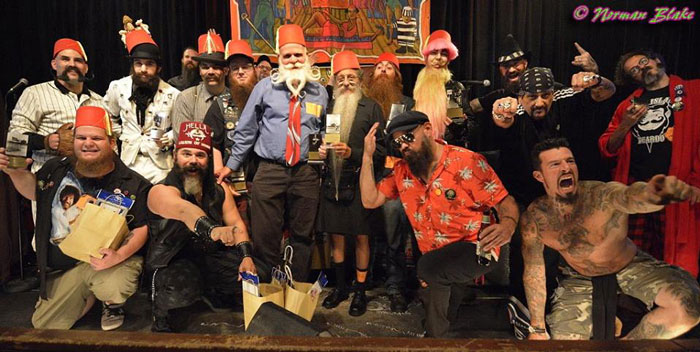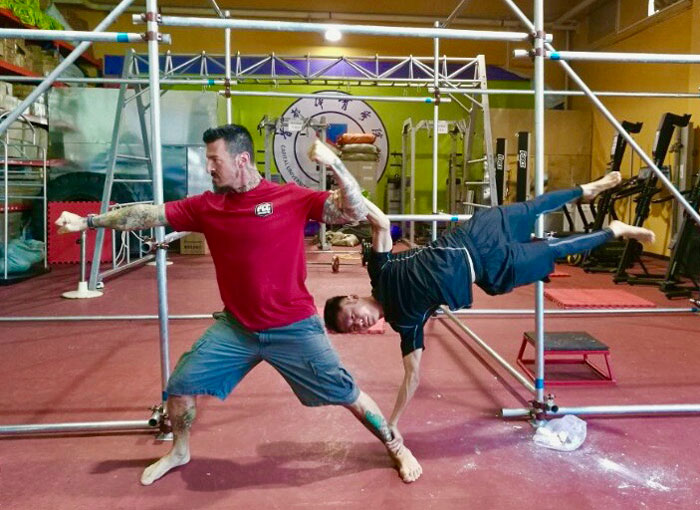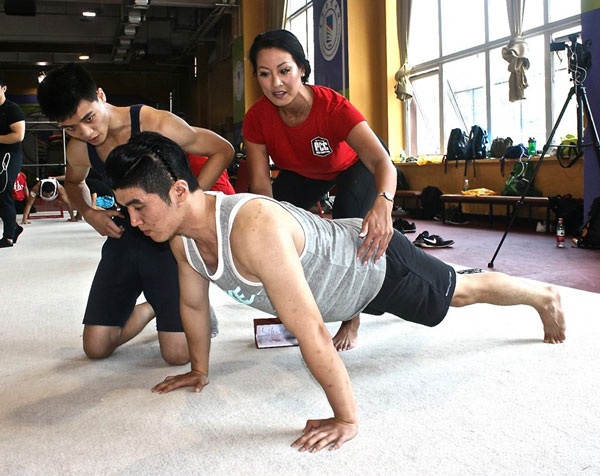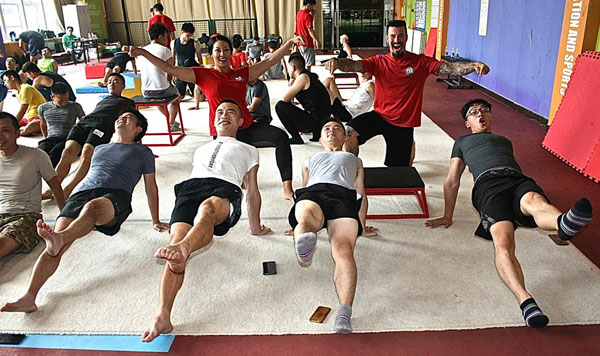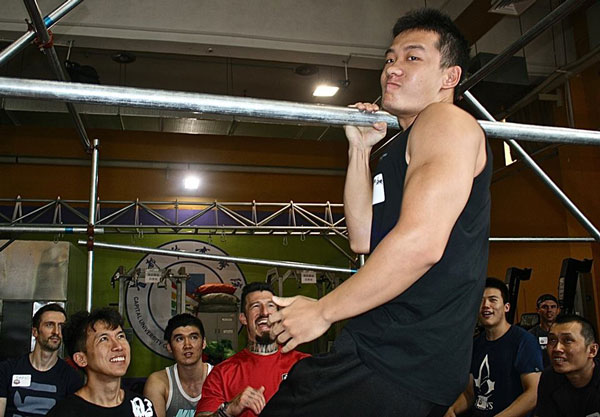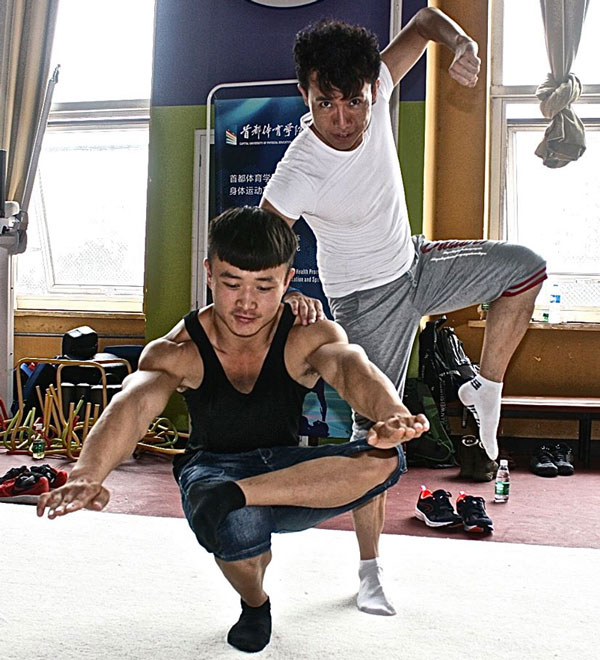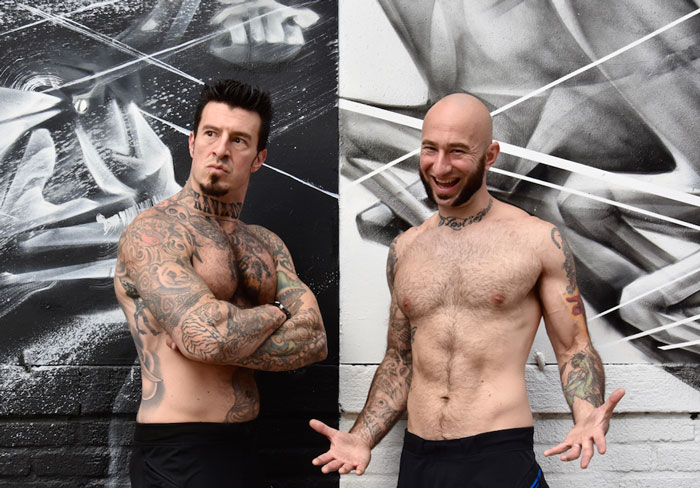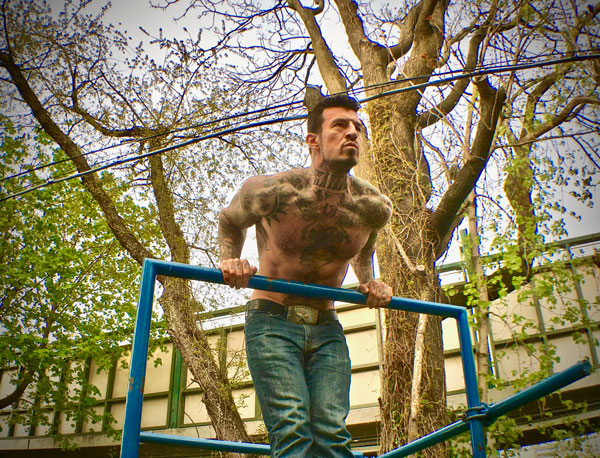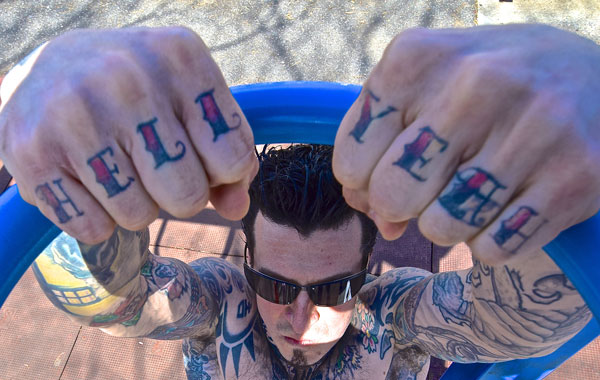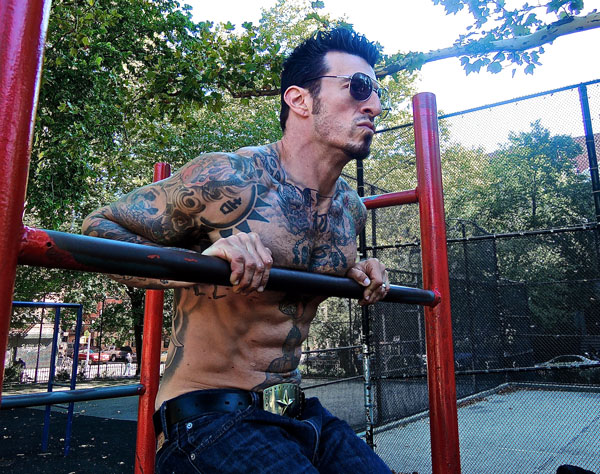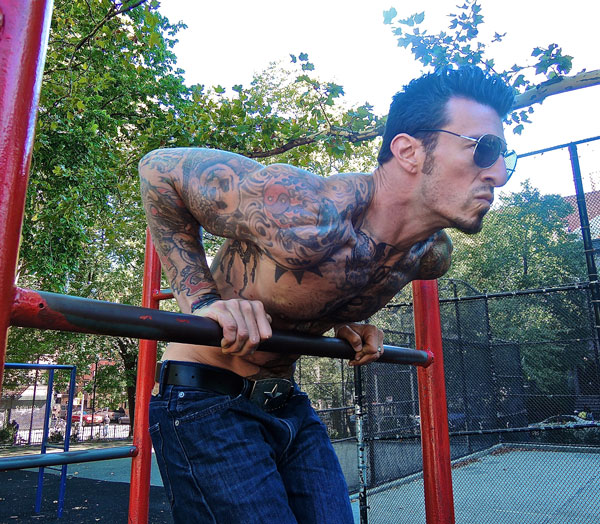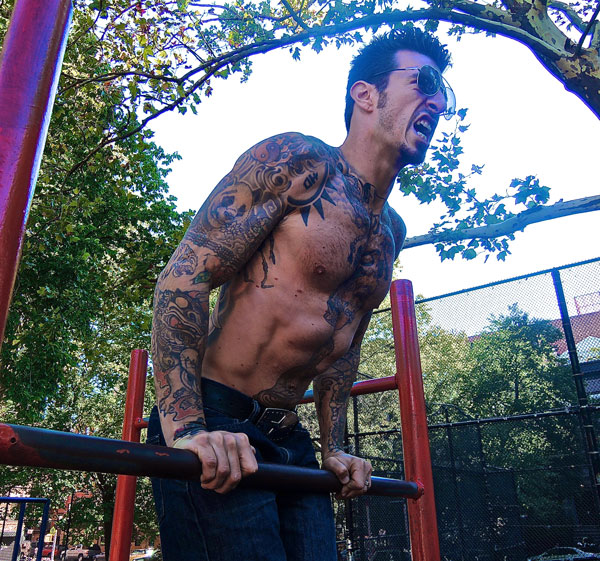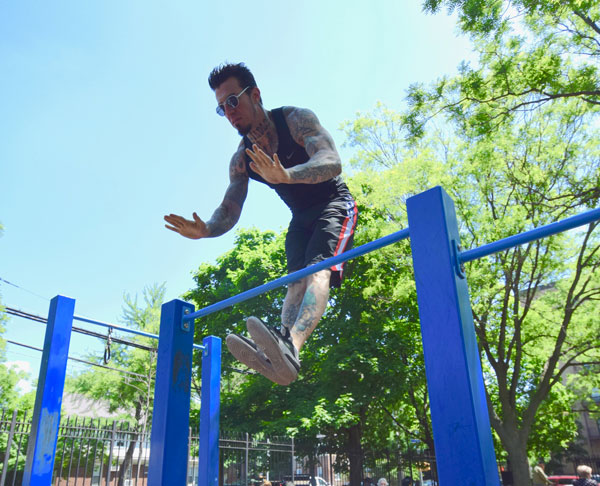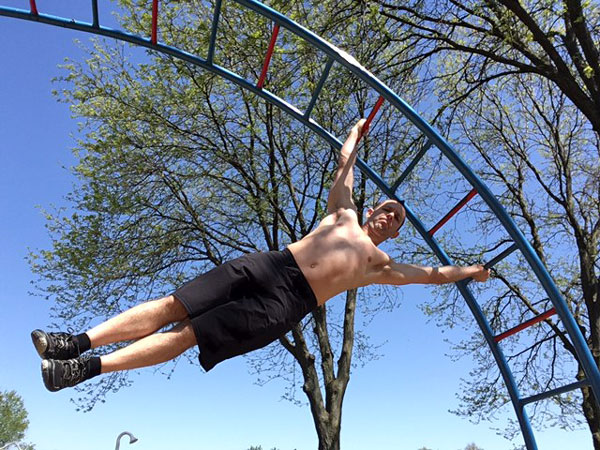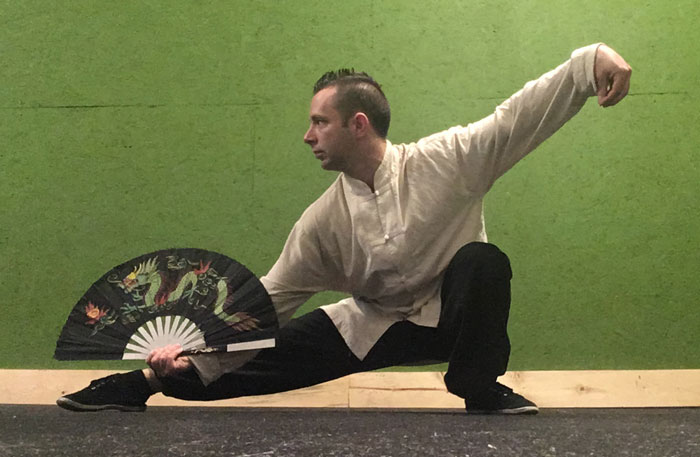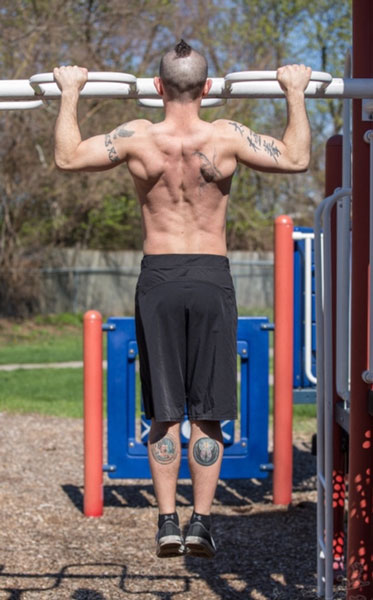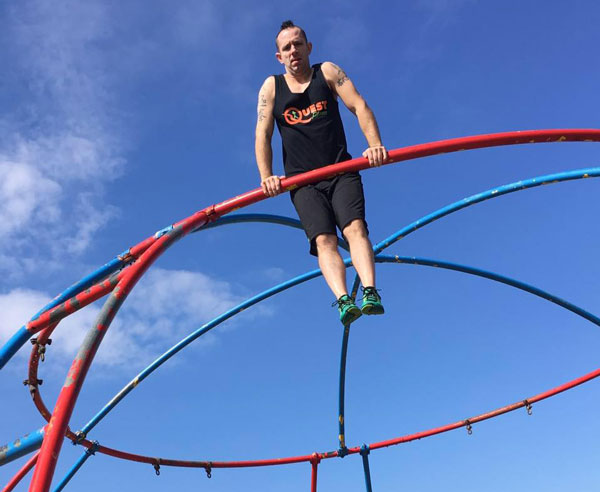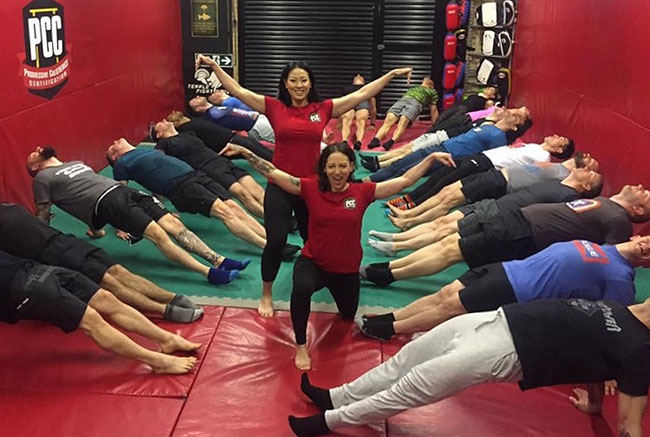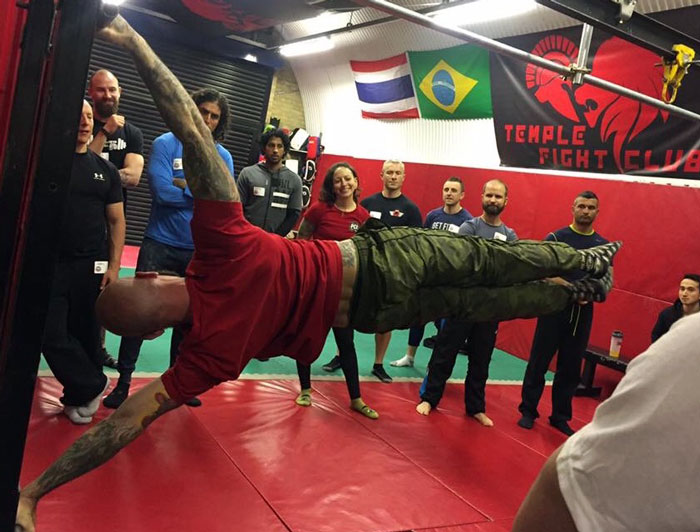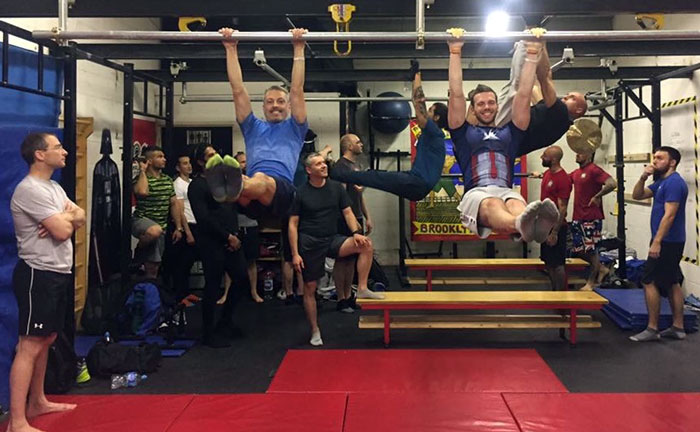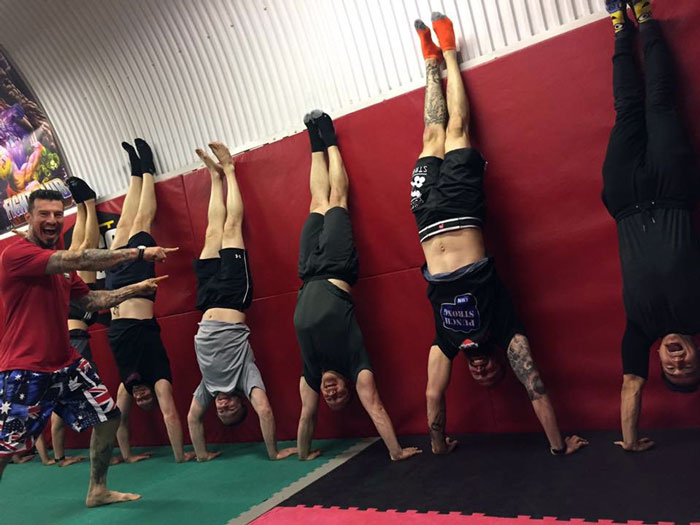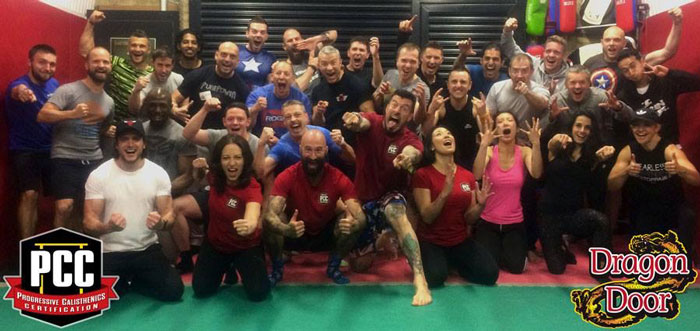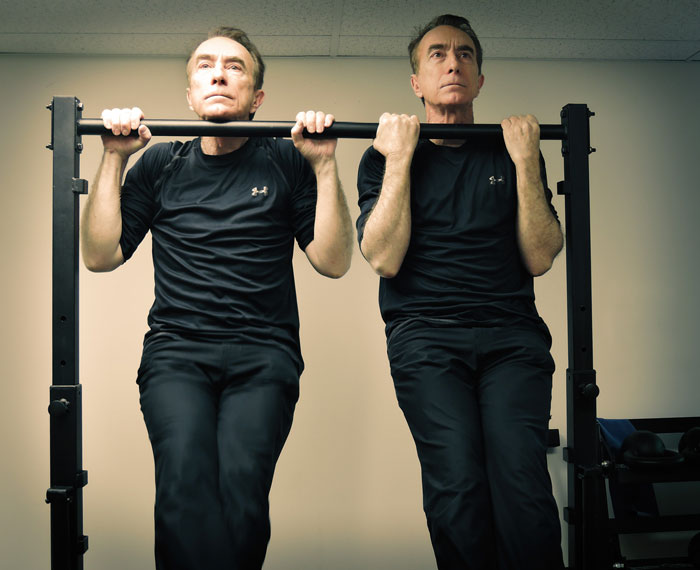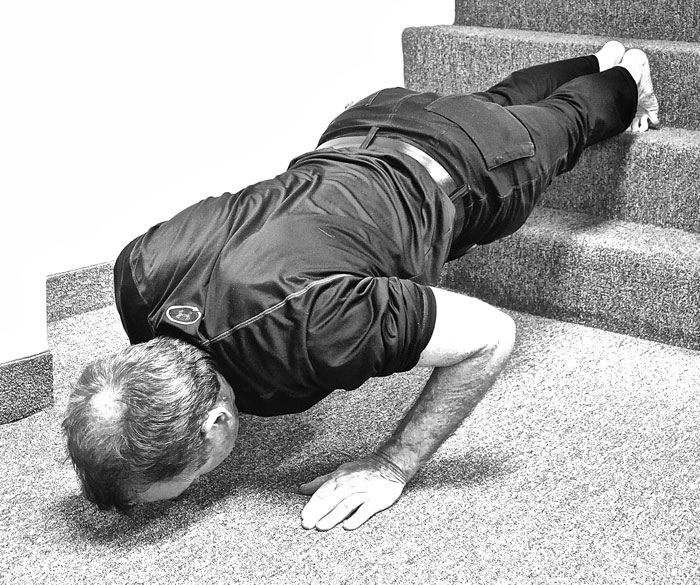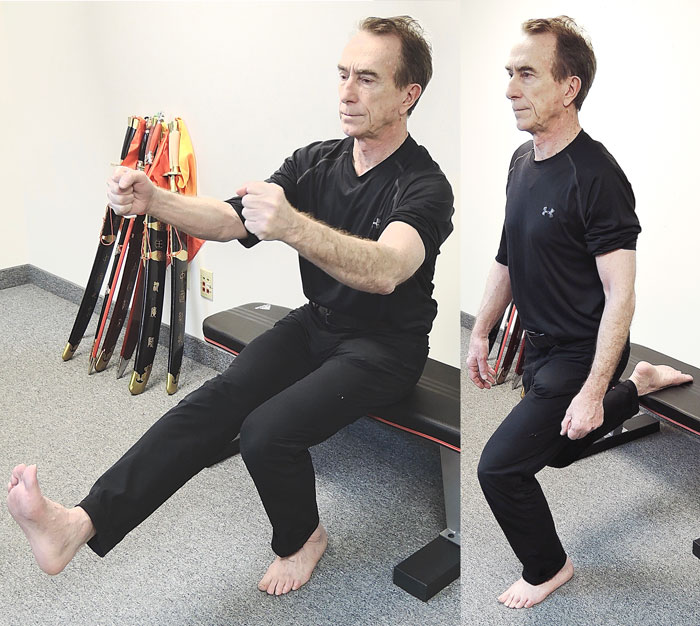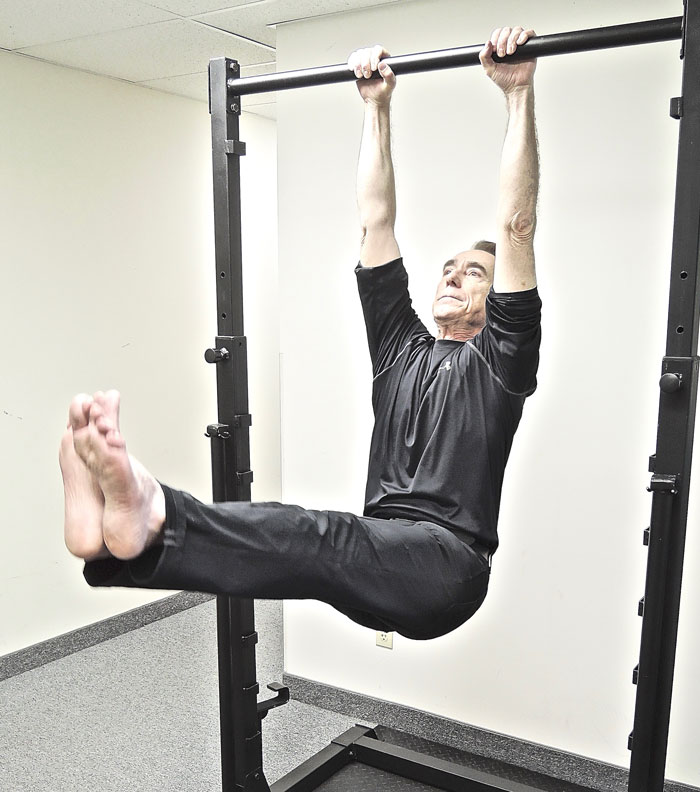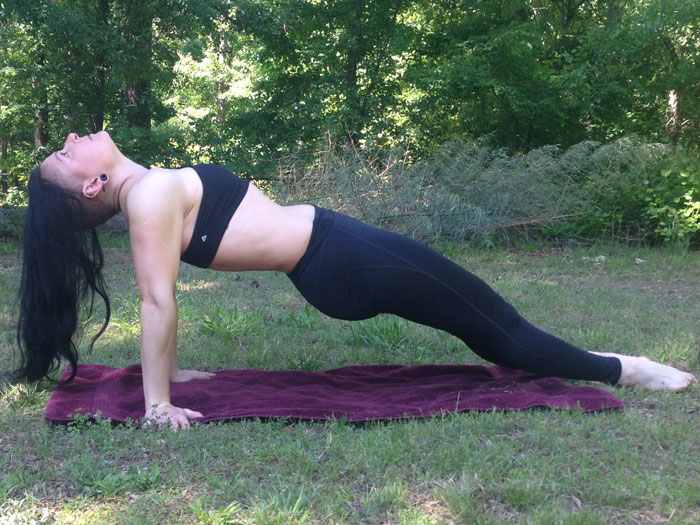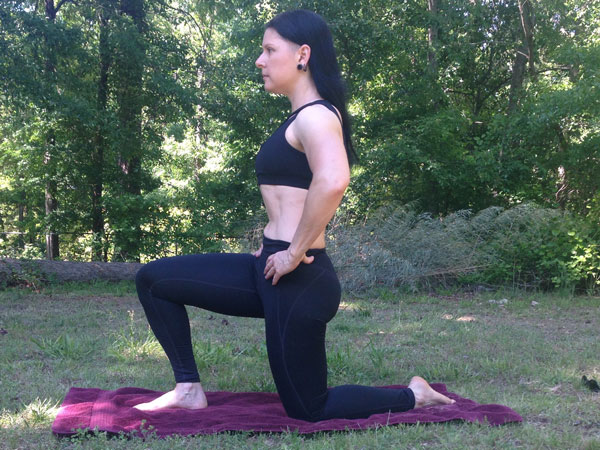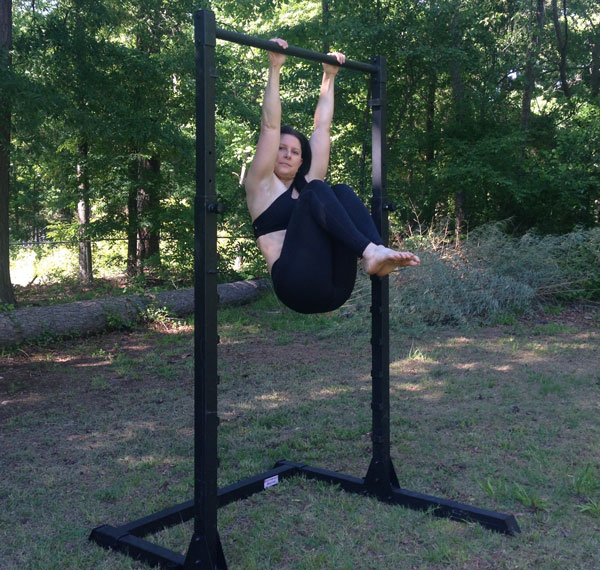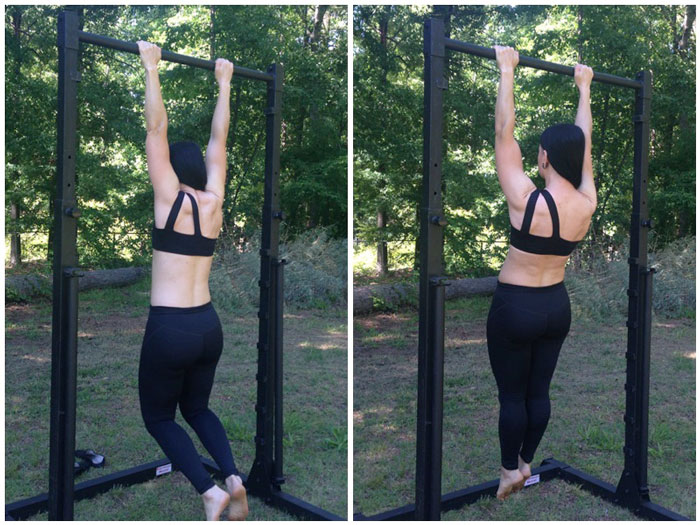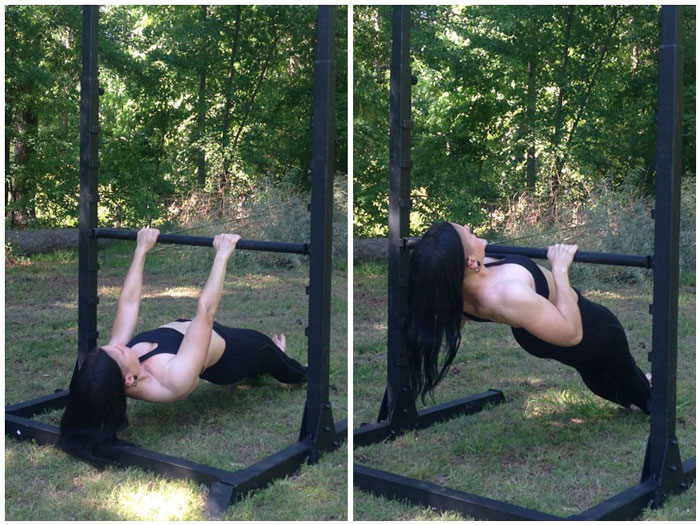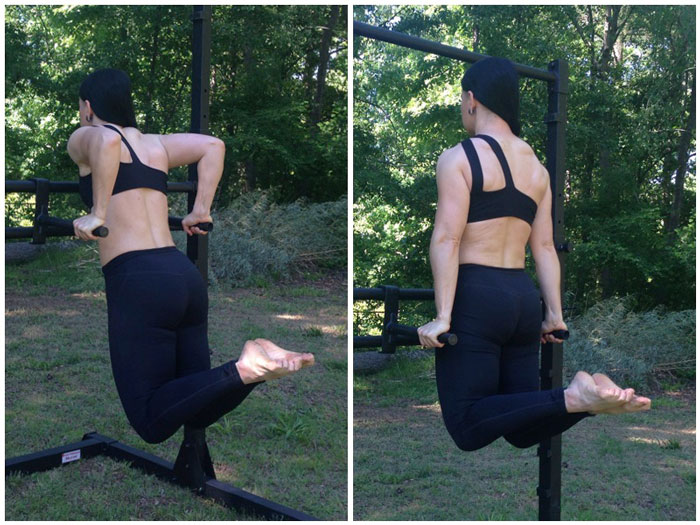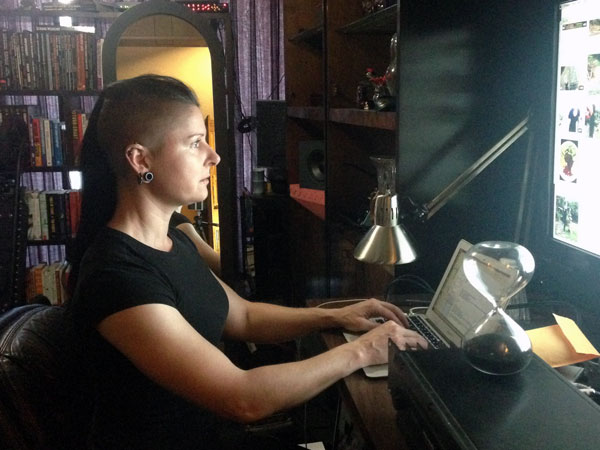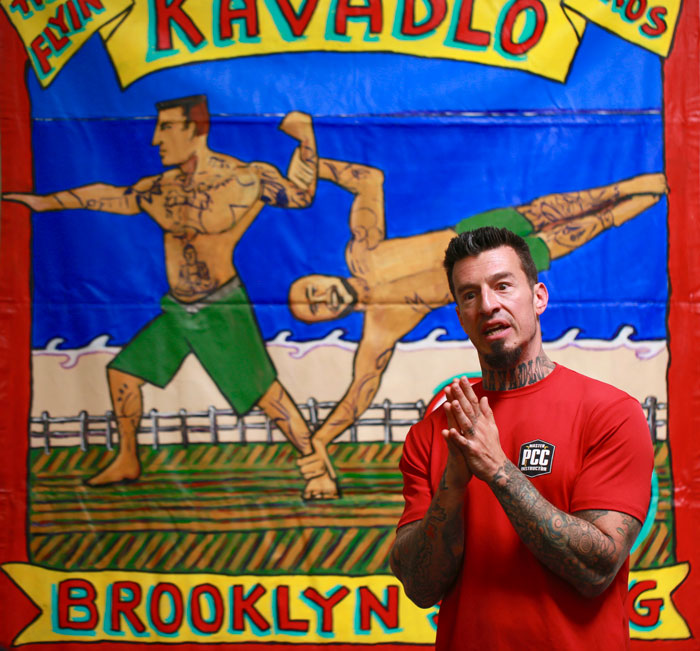
And you may find yourself in another part of the world…
That’s what tends to happen when we instruct Dragon Door’s Progressive Calisthenics Certification, the first and best bodyweight training certification on the planet. In fact, in the nearly five years since its inception, the PCC has taken place in dozens of cities and numerous countries, spanning across four of the seven continents.
I guess you guys really love your pull-ups!
Last week, my brother Al Kavadlo and I, along with PCC Team Leaders Annie Vo and Grace Kavadlo, headed from New York to LA for California’s fifth PCC workshop. To say that it was an amazing experience would be to gravely understate the sentiment. This was one for the record books. But more about that later…
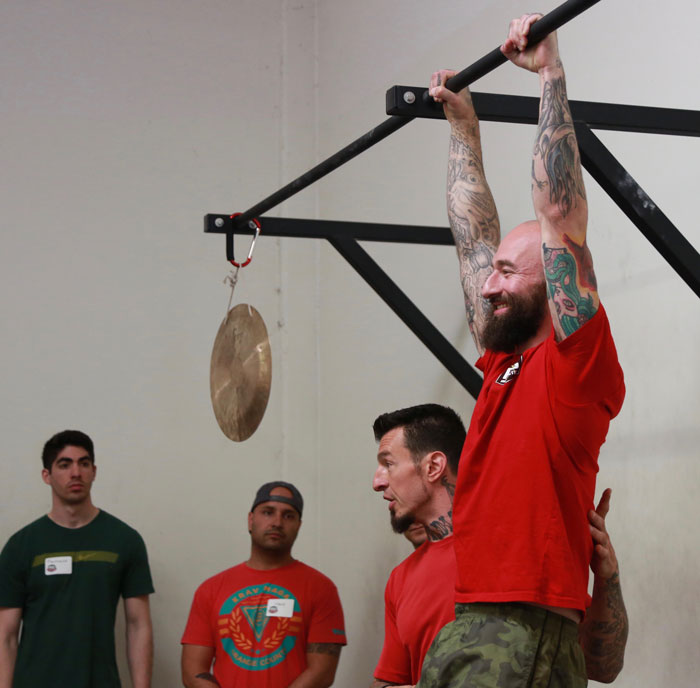
The event took place at Kettlebells South Bay, my personal favorite training facility in all of LA County. This self-proclaimed “unconventional training” center features built-in human flag poles, super-high ceilings and more pull-up bars than you could shake a stick at. But for me, the best part of the weekend by far, was the people in attendance.
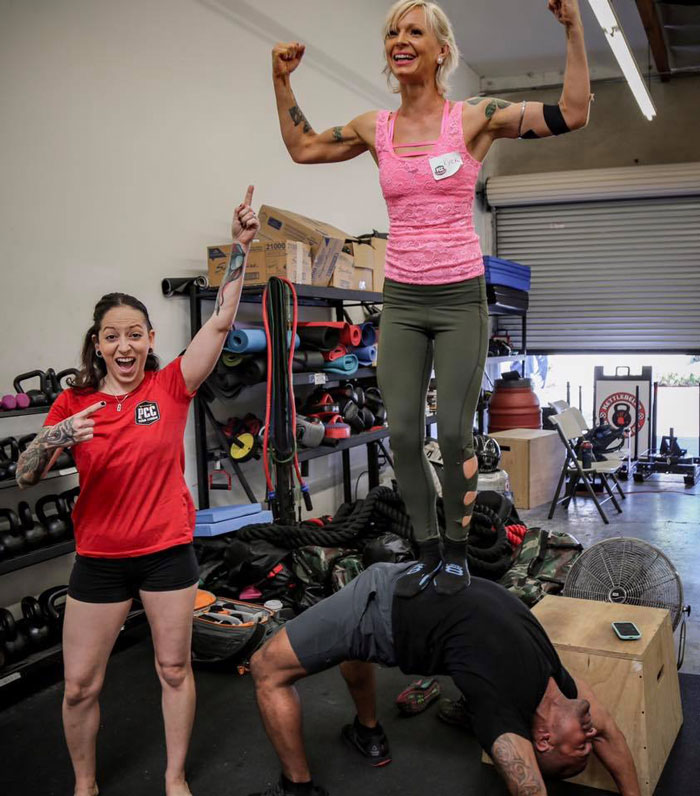
The energy that filled the room really had to be experienced in order to be believed. As anyone who’s ever been to a PCC can personally attest to, the combined vivacity that erupts when you get a group of calisthenics fanatics together is inexplicable. It’s no wonder there were so many personal records set! From muscle-ups, to pistol squats, and even a one-arm dragon flag, a multitude of first time feats of strength, balance and skill were achieved!
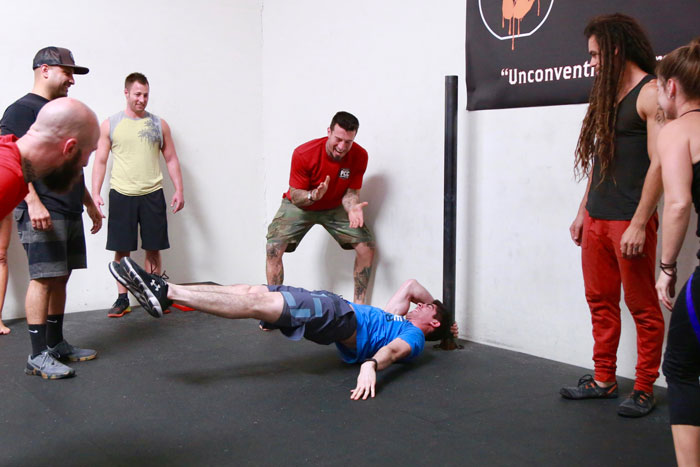
It warms my heart and feeds my soul to be part of the chemistry. But to be clear, I was only a piece of the equation. Everybody played their role in the magic. It was truly a shared experience.
We celebrate the successes of the person next to us. In encouraging them to do better, we also bring out the best in ourselves. That’s really one of the most spectacular parts of the calisthenics community. When you take your neighbor by the hand, you both bring out the best in each other.
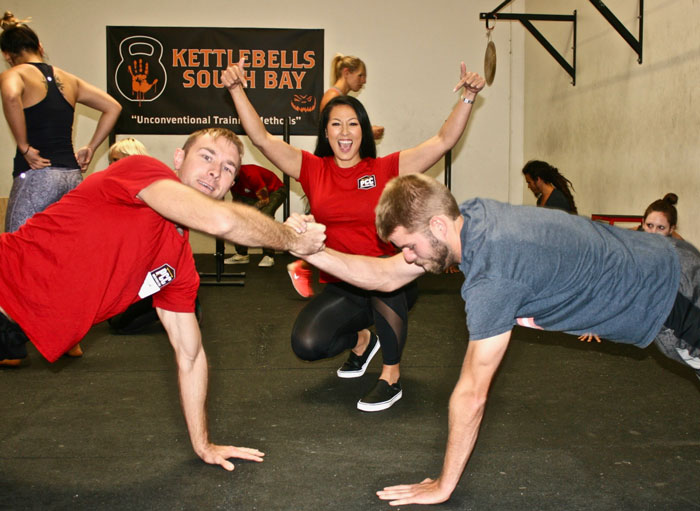
And you my ask yourself, has there ever been a PCC where everyone in attendance passed the infamous Century?
Yes. Once in a lifetime there was. And this was it. I told you this was one for the record books!
That’s right; every single man and woman in attendance performed 100 proper reps—40 stellar squats, 30 perfect push-ups (or knee push-ups), 20 hanging knee raises and 10 powerful pull-ups (or Aussie pull-ups). Never before had this happened in nearly fifty certifications around the globe.
Will it ever happen again? I couldn’t say. But you can. That’s right—I hope to see you, dear reader, at a PCC down the road. We’ll see if lightning strikes twice.
Big congratulations to all the newly certified PCC Instructors. You’ve raised the bar for us all and I thank you.
The posse’s getting bigger!
-DK
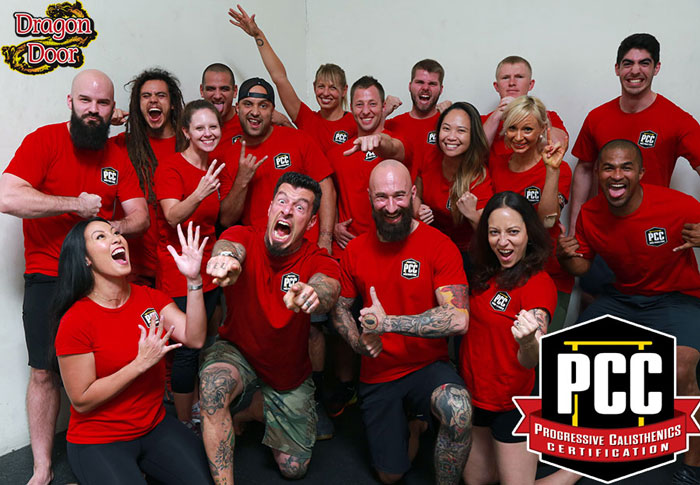
Photography: Riley Christian
****
Danny Kavadlo is one of the world’s leading authorities on calisthenics, nutrition and personal training. He is the author of several best-selling Dragon Door titles including GET STRONG and STRENGTH RULES. Danny has been featured in the New York Times, Men’s Fitness, and the Huffington Post. He is a regular contributor to Bodybuilding .com and TRAIN magazine. When not working one-on-one with clients in his native New York City, Danny travels the world as a Master Instructor in Dragon Door’s internationally acclaimed Progressive Calisthenics Certification. Find out more about Danny at www.DannyTheTrainer.com
